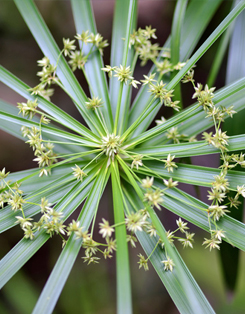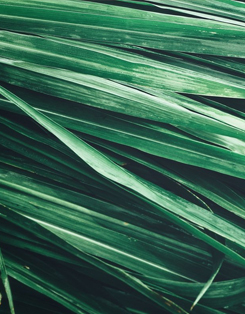Essential Oils

Cypriol essential oil or Nagarmotha(Botanical Name: Cyperusscariosus R.Br), is derived from steam distilled dried roots of Cyperusscariosus. It exudes a tenacious aroma similar to Vetiver and Oud. Cypriol, a native to India, works well with oriental and woody masculine or unisex perfumes.
An emotionaly calming essential oil, Cypriol is used in aromatherapy for conditions of respiratory congestion, digestive issues, to improve circulation, with some sources regarding it beneficial for relieving menstrual cramps when used in a compress across the abdomen.
The earthy, leathery, slightly sweet and spicy aroma of Cypriol essential oils is calming and grounding. It is ideal for use in perfumes, incense or to augment meditation.
Aromatherapy use:
Anti-inflammatory, anti-anxiety, decongestant, digestive tonic, improve circulation, menstrual cramps, nervousness. It blends well with Bergamot, Cassie, Cedarwood (Virginia), Cistus, ClarySage, Frankincense, Galbanum, Labdanum, Mimosa, Myrrh, Oakmoss, Patchouli, Sandalwood, Vetiver.
General use:
Oils diffusers, potpourri, massage oils, perfume, bath and body skin care, spa treatment oils, wraps, facial masks, skin creams, soaps, creams, lotions, bath oil, candles, incense.

Vetiver essential oil, also called khus oil, is extracted from the vetiver plant, a clumpy, green grass native to India that can grow five feet high or more. It is in the same family as other grasses used for their essential oils, including lemongrass and citronella.
Vetiver oil is quite fragrant, with a distinctive sharp and earthy scent you may recognize from men's cologne.It is distilled from the plant's roots, which are aged before being soaked in water. The highly concentrated oil that is released is then skimmed off the top of the water. It's used in holistic practices for its soothing, grounding capabilities.
Aromatherapy use:
It is beneficial for soothing anxiety, insomnia, fatigue, depression, and inability to concentrate or remember. It is sometimes inhaled as aromatherapy fornervousness, insomnia, and joint and musclepain.
It blends with Ylangylang, Cedarwood, Tangerine, Lemon and other citrus scents Jasmine, Lavender, Patchouli, Neroli, Rose, Sandalwood, Marjoram, Cardamom, Clary sage, Peru balsam
General use:
Vetiver is sometimes applied directly to the skin for relieving stress, as well as for emotional traumas and shock, lice, and repelling insects. It is also used for arthritis, stings, and burn.

Lemongrass, also known as CymbopogonFlexuosus, is a tall, perennial plantnative to India and other surrounding countries. It has long, aromaticleaves that are cut and steam-distilled to produce essential oil. The oil is often used in perfumes, detergents, soaps, etc. The oils can also be taken internally, which makes lemongrass quite popular in the food industry for baked goods, gums, and candies.
In East India and Sri Lanka, Lemongrass was historically used to make soups, curries, and a local drink called "fever tea," which was intended to treat not only fevers but also diarrhea, irregular menstruation, stomachaches and skin infections. In China, it had similar uses. Today, it continues to be used in Cuba and the Caribbean to reduce blood pressure and to assist digestion.
Aromatherapy use:
Lemongrass essential oil is a popular tool in aromatherapy to help relieve stress, anxiety, and depression. It blends well with basil, bergamot, black pepper, cedarwood, clary sage, coriander, cypress, fennel, geranium, ginger, grapefruit, lavender, lemon, marjoram, orange, palmarosa, patchouli, rosemary, tea tree, thyme, vetiver, and ylangylang.
General use:
People have used lemongrass in traditional medicine for pain relief, stomach problems, and fevers. Its antioxidant, anti-inflammatory, and antifungal properties may also give it other benefits.
